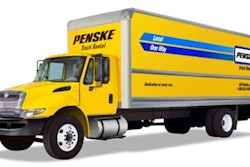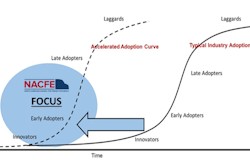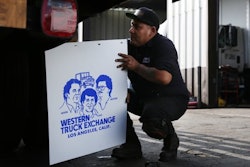
All that said, nearly half (48 percent) of dealerships responding to a 2019 Trucks, Parts, Service reader survey said they expect 2020 revenues to be higher than in 2019, with 18 percent expecting to have revenues more than 10 percent higher than last year and 30 percent anticipating a revenue increase between 2 and 10 percent.
Only 3 percent of dealers expect revenues to be significantly lower, more than 10 percent, than 2019, and 28 percent expect revenues in 2020 to be 2 to 10 percent lower than the previous year. Nearly one-fourth of respondents expect revenues to be equal to 2019.
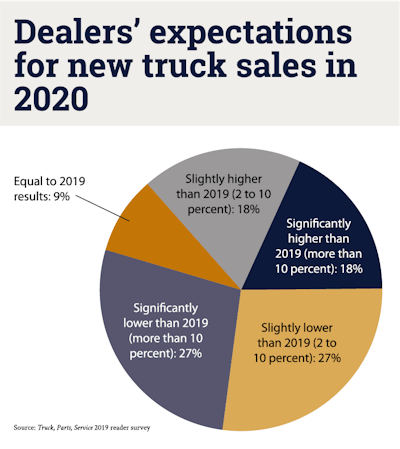 Click to enlarge.
Click to enlarge.Palmer Trucks is anticipating growth across a variety of metrics, specifically fleet sales and parts. A variety of verticals utilizing commercial trucks are expected to grow, and the company anticipates seeing positive effects from that growth, says Jacob Nichols, director of corporate operations.
“Palmer Trucks will be making significant investments in both its physical plant and human capital in order to meet future industry growth and keep pace with shifting market dynamics,” he says. “[This] will be a year focused on customer relationships, employee development and strategic planning for the years to come.”
Greg Schuttenhelm, vice president and chief operating officer, TEC Equipment, says the biggest trend that might affect TEC in 2020 is the softening of the trailer market which, like trucks, is coming off of record business levels.
“We expect to see this to continue for the next couple of years. If anything, a softening of the trailer and used truck markets, but still strong markets, allow us to work on the things that will position us for better performance and more market share in the years to come,” Schuttenhelm says.
For 2020, Jerry Kocan, dealer principal, Four Star Freightliner, expects “more telematics and connectivity on our trucks and with our customers. We will continue to invest in people and ensure we are prepared for the future.”
And part of that preparation for the future includes being ready for the new breed of trucks, although that appears to be a moving target.
 Click to enlarge.
Click to enlarge.“I’d like to prepare our infrastructure for electric. We’re trying to prepare but we just don’t see those trucks in our areas yet and it looks like it’s going to be a little ways off, for us at least,” Kocan says.
“It’s difficult because years ago we geared up for CNG but it didn’t get to the scale we thought it would. It looks like we’re headed toward some type of electric power or fuel cell. But I don’t get a consensus when I ask people how we should prepare as a dealer, so that’s an unknown part,” Kocan says.
Many in the industry don’t expect truck sales to match 2018 numbers, but that doesn’t concern Hunter Truck President and CEO Jeff Hunter because of the company’s vocational business and because “by not having any large fleets, we don’t rely on any one customer. 2020 should be another record year. We’re positioned for more growth and we’re always looking for opportunities to grow more.”
Case in point, Hunter Truck will be adding a Peterbilt dealership in Scranton, Pa., and an International dealership in Philadelphia.
“In the near term I think business primarily for new truck sales will be softer than we’ve seen the last couple years, but I still think it will be above industry average,” says Fyda Freightliner Dealer Principal Tim Fyda.
However, Fyda says he expects some additional Western Star and vocational business because of millions of dollars being divvied out to states for various projects.
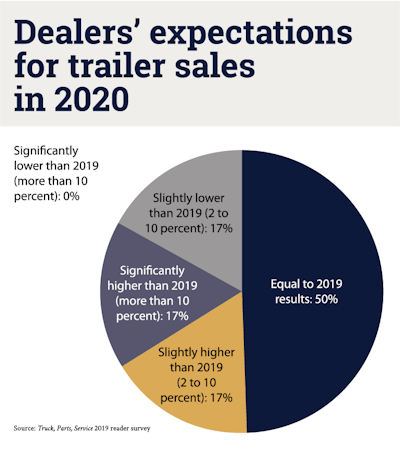 Click to enlarge.
Click to enlarge.Looking ahead, Korey Neal, president, K. Neal Truck and Bus Center, is noticing a change in his dealership’s customers. They’re getting younger. When Neal first came into the business, it was 40- to 60-year-old customers making the large truck-buying decisions. Now, in many cases, he’s seeing customers 25 to 40 years old making those decisions — a trend he expects to continue.
“Relationships that may have been so solid five years ago, there could be a different person in that position now,” Neal says.
“There’s a lot of things changing but change can be good. As an organization, we need to embrace the change. If you resist it, it never works out,” he adds.
(Editor’s note: The technician shortage in the aftermarket and dealer channels will be addressed in Part VI of the TPS State of the Industry report. It will appear in TPS Daily on Thursday, Jan. 9.)


